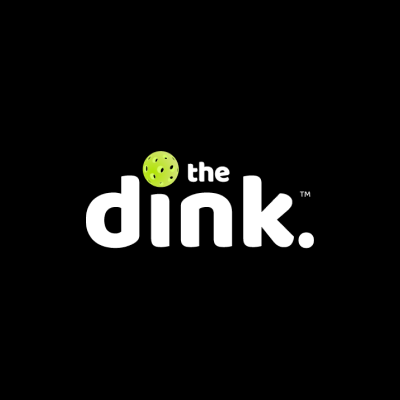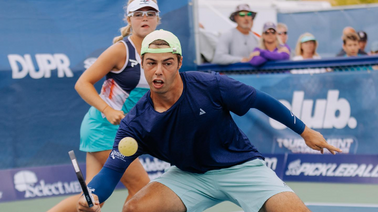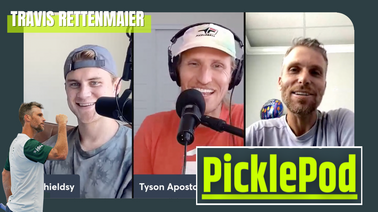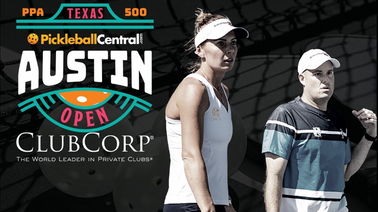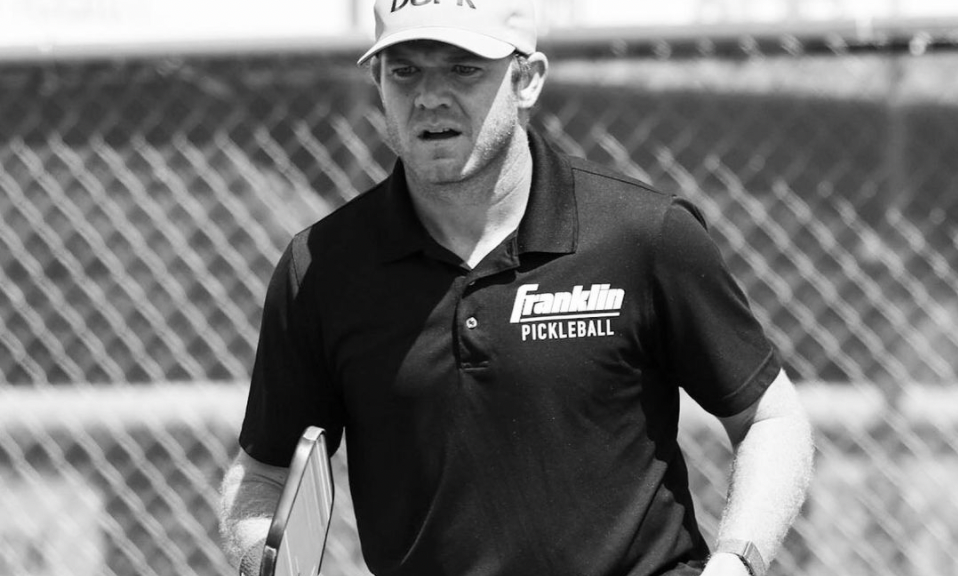
Rob Nunnery: 50+ tournaments in 2022 counterproductive, the future of pro pickleball
Cost of Pro Part Two: Ways to Move Forward
by Pro Rob Nunnery

The only intention of my original post was to share the actual costs of playing pro pickleball and everything it entails. I wasn’t whining, complaining or being needy. I clearly know the costs associated with traveling and playing pro pickleball and I choose to do it because I can.
But is pro pickleball really trying to attract dudes in their mid-30s that have time and money to pursue a new hobby? Or should pro pickleball be making the barriers lower for ex-stud tennis players in their 20s?
That first post was simply sharing the challenges we’ll face in attracting new talent with the current high entry fees and shallow payouts. Nearly everyone in their early to mid-20s is priced out of pro pickleball from the get go.
Since I didn’t offer any solutions the first time around, I’ll share some thoughts here.
The tours are already looking to pay deeper next year and that is a great step forward. Some have said that paying $50 to $100 for a first round win doesn’t matter. Well, I would strongly disagree.
Sure, I believe these payout structures are way too top heavy (1st/2nd), but I also believe that every dollar that you can spread throughout the entire draw matters a lot. It also puts more on the line in early round matches. The lower rated teams are fighting for money in the first round whereas they usually have no shot at walking away with anything. How fun is that!?
I understand the PPA is moving toward this next year. It may not be perfect (I don’t know the exact structure), but it’ll be a step in the right direction. Progress is good.
I’m not sure if the APP is moving toward a per round payout, or if they plan on paying out to more teams. It will be interesting to see what they do.
While on the topic of the two tours, I think 50+ pro tournaments is counterproductive for the sport at this stage in its development. And yes, 50+ tournaments is what we have on the docket for 2022 just between the two main tours, PPA and APP.It doesn’t even account for the US Open, TOC, Nationals or any of the National Pickleball (NP) pro tournaments. There could very well be over 60 pro tournaments next year.
We need the best product on display to garner enough eyeballs to make this whole damn thing worthwhile.Spreading the talent out across 50+ tournaments, many of which will have really weak and tiny draws, will often not be a good display of the sport. When I say weak draws, I believe there will be pro draws where people that follow pro pickleball won’t recognize a single name. Women’s draws may be nonexistent in a lot of these.Women’s draws at big tournaments barely get enough players for an eight team bracket right now.
Having over 50 pro tournaments will only exacerbate the issue.Whether someone plays primarily APPs or PPAs, everyone needs a break. Even the most zealous of players will play around 30-35 tournaments. That’s an ambitious number. Most regular tour players will be somewhere between 15-25 tournaments. So even for the most ambitious of players (30-35 tourneys), there will be 15-20 pro tourneys that even they can’t make it to.
I think it will be a real issue next year and I foresee a handful of the tournaments getting cancelled, similar to how the New Mexico Open PPA and the Las Vegas Metro APP got cancelled this year (irrespective to why they were canceled this year because I’m not entirely sure).
With that many tournaments, you also lose some of the prestige associated. Oh, another week, another tournament.Another option would be to make many of those 50+ tournaments low level $15k pro tournaments. It could act as a Futures/Challenger tour like tennis has for players to develop as they try to qualify for the main tour.
In a perfect world, the tours would combine forces, combine purses, slim down to 25 primary tournaments, limit draws to a reasonable size based on ranking, let four teams qualify through a qualies draw and pay everyone a reasonable amount that reaches the main draw. Combining purses would make the 2022 total purse more than $3.5 million over 25 tournaments. This brings the average tournament purse to $140,000 over those 25 tournaments. Even if this hypothetical combined tour decided to spend $30k per tournament in appearance fees, each tournament purse is now over $100k.
We have a hypothetical big-time pro pickleball tour now and every tournament and every match counts a lot. People will be amped up on betting. With 16 to 20 team draws, it’s reasonable to livestream every match, especially if you have eight courts being livestreamed for gambling.
Of course the big caveat here is the tours combining purses and working together.Who knows if that would ever happen, but I’d like to see our fragmented sport come together a bit more for the good of the game.It’s much easier to move a sport forward if everyone is rowing in the same direction (whaddya say, USAP HOF!?).And whether the tours ever consolidate or not, the PPA already seems relatively close to being able to have a $3M+ annual purse. Seeing that for 2023 wouldn’t surprise me at all.
Having a singular pro tour would help unify the sport.I know there are a lot of advocates for the senior pros out there, and there should be! The current seniors paved the way for the sport and we’re indebted. The issue is that I feel the sport will struggle to reach the masses with a combined pro and senior pro tour. Seniors, I love you. You deserve your own tour.
It would simplify how funds are distributed and also make the tournaments run faster. There wouldn’t be any disputes on who should be playing on the livestreamed court. It would make the product more consistent. For a new viewer, it’s strange to watch a pro match and then a senior pro match right after.
Pro pickleball is maturing. I’m going to keep coming back to putting the best product on the court to attract eyeballs and attention. That is ultimately all that matters right now. The trickle down effect from getting more eyeballs will take care of everything else. More eyeballs leads to more sponsors, more sponsors leads to a larger payout, a larger payout leads to elite talent coming in.
From here it’s a snowball effect. When there is elite talent, more people will watch, more sponsors will latch on and more money will funnel through. I believe this is the way forward. To recap, we need:
– limited draw sizes (qualies for lower ranked),
– reduced entry fees (I know there’s a way),
– more streamed courts (similar to how you can watch every single court for the tennis US Open on ESPN+),
– more scheduled matches (set match times are better for fans and players),
– deep and talented brackets will be a byproduct of a limited draw size,
– higher quality matches in every round will be a byproduct of a limited draw size,
– deeper payouts,
– a professional venue
– a high quality broadcast.
These are the key ingredients. Until we are able to accomplish the above, the sport at the pro level will struggle to grow as fast as it should.
I think an overlooked aspect of what could be a huge catalyst in pickleball, is betting. If I remember correctly, for the PPAs, there will be eight live streamed courts with matches eligible for gambling. It will bring eyeballs in droves and I feel it’s what makes tennis so intriguing to watch for a lot of people. If the gambling is open to a global audience (not just USA), watch out. Viewership could skyrocket quickly.
I heard Djokovic say recently that tennis is the third-most watched sport in the world.Why does tennis make for such great viewing? I love the US Open because I get to watch the next crop of young American talent. I get to watch the 18-year-old Kalamazoo champ/wildcard battle the 16 seed to a close four set match. I’m pulling so hard for the underdog that I’m glued to the screen every point. I’ve never even heard of the kid and now I want him to win more than he does.
I think part of that is because I know a little bit of his backstory and how he qualified for the main draw by winning the USTA 18s hardcourts. Everyone wants to see new players breakthrough. It’s exciting. I think we need to highlight players like that in pickleball. We need to do a better job of storytelling. People invest in stories and connect to people they can relate to. There aren’t many physical sports out there where a 48 year old can be playing an 18 year old at the highest level of the game.You get crazy intriguing matchups. We need to share that. We need to do a better job of building out complete profiles of players and doing features on them. Viewers need to understand more than just their sports background and hometown. That’s not interesting.
There was an Instagram profile I saw recently with a poignant quote. It’s a line I can’t fully remember by a person I don’t even know, but it struck a chord with me.“I’ve never met a person that I didn’t love after I learned their story.” That’s probably not the actual line, but it’s close enough for you to understand the sentiment. Stories about people can build this sport.
Why is this particular player committed to pickleball? Why are they playing 30 tournaments a year at a financial net negative? I mean, talk about commitment to a sport in the most thankless of ways. I want to hear that person’s story.We should do a better job of elevating each other and our stories on social media. It’s lacking.
I had someone reach out comparing pickleball to another niche sport, speedcubing. Based on a quick google search, they solve Rubik’s cube type puzzles as fast as they can. The top speedcubers in the world, which is a much smaller niche sport than pickleball, have larger social followings than pro pickleballers. The average age of a pro speedcuber is in the teens. Social media is second nature to that generation. Pickleball has historically been a seniors sport. It makes sense that social media is lagging.
We need to be able to rebrand pickleball for a younger demographic so it gains more traction. How do you make pickleball cool? We can start by removing paddle graphics from all logos ever. It’s so clip-arty. Be better than clipart.
I think TheDink is doing a great job with content as their ‘voice’ connects with a 20s/30s demographic. The Kitchen as well. I think the real opportunity is reaching the 4 million casual players that don’t know pro pickleball exists. This might sound ridiculous, but hang with me here.
Every pro player (and amateur!) out there should be going to random courts occasionally and hopping in to play and connect for five minutes with the beginner/casual player. Especially if they are a younger (20s/30s) demographic. Yeah, I know.It’s crazy grassroots-ish and you might feel it’s a waste of time, but I did this at Dreamland with some mid-20s people just starting the sport and they loved it. Then they followed me on social media and then they asked even more questions about the sport. And now they are hooked.
Grassroots is difficult, but it builds connection and entrenches people.There’s a reason that most of the pros with the biggest followings on social media are the ones that teach a ton of camps. They build in-person connections and create fans for life. That’s a huge piece of it. I don’t believe that a player’s social presence will grow only after people watch livestreams and discover the players. I believe that players can gain a social presence first and then drive those eyeballs to the livestream.
Even though it’s a small example, the group of 20-somethings at Dreamland that I talked to now see my posts about tournaments, they notice the livestreams and now watch the pros. These are just some ideas. They may or may not be good ideas.
Regardless, if you read this far you obviously care about the sport so let’s all work together to bring it to more people.
PS. I feel like my first post [the cost of pro pickleball] revealed an uglier side of the pickleball community.While that post may have been a conversation starter and revealed some of the challenges in pro pickleball, I certainly didn’t provide any solutions.I don’t believe the GoFundMe put forward by Jill Braverman was fleshed out enough or even a great short-term solution (in my opinion), but I absolutely respect her for taking the initiative to actually DO something.Her intent seemed pure and she was gaining nothing from it.Whether you agree or disagree, kindness over everything.
You can find Part 1 on Rob Nunnery’s Facebook page.


